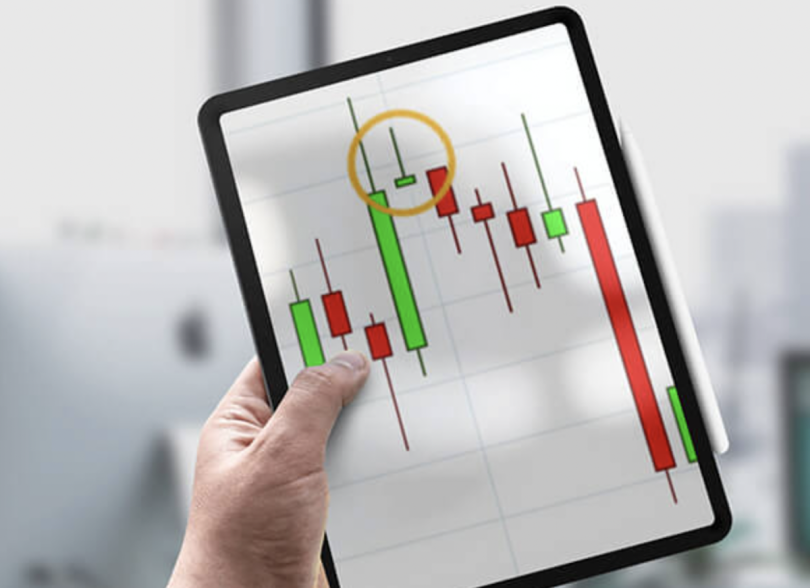The Doji candle is a type of candle that forms when the two ends of the candles are open, and prices are moving in opposite directions. The Doji shape can be seen as a price consolidation. Doji candles typically appear at the end of a bullish trend, trading sideways between an up-trending market and a down-trending market. This is important to note because they can serve as warning signs for what traders should expect if they enter a position during these candles.
To form a Doji candle, the market’s main trend must be up trending. As such, prices are likely to increase during this period. If prices are trending in one direction, this means that most of the candles will have been long. As a result, Doji candles can be formed to consolidate two trends. It can also happen when prices are moving sideways because there is usually some price congestion between two extreme points in the price range.
There are two types of Doji candles: the dragonfly and the hammer. Both forms have unique characteristics, which are different from other candle types.
The Hammer Doji candlestick appears when prices trend higher due to a bull market. It is considered one of the most bullish candle patterns because it forms during an uptrend and serves as a significant warning sign to indicate that further price increases may not be expected because of the narrow range between the open and close of this type.
Hammer candles that appear in the middle of a long upward trend and have a short body (less than one-third of the length of the candle’s range) are called “suspended hammers.” These hammers can also be seen as “inverted hanging man” and are generally considered quite bullish.
This type is similar to the Dragonfly Doji. A long uptrend is expected to be followed by a significant downtrend, which usually identifies the end of a bullish market. Following this type of trend, it appears as though prices will continue in their downtrend. Both price extremes are equal, and there is only a short distance between them. The small range between the open and the close of a Doji candle indicates that price congestion occurs between two extreme points.
The high close of a hammer Doji candle (less than two-thirds of the length of the open price range) indicates that prices will likely fall during this downtrend. The low close indicates that prices will probably rise due to this downtrend. Therefore, this type of Doji is considered a warning sign for traders.
The Dragonfly Doji is a bearish reversal signal. A downward trend will quickly be followed by an upward trend but with a long and narrow range between the open and close. This type of candle can serve as a significant warning sign that conditions are not favorable for further increases in price because there was no support or resistance to hold it back during this period.
How to use the Doji candles for profit?
Doji candles are relatively easy to use because of their price range. However, they do not offer as much information as other candlesticks. Because they are short in length, it is difficult to predict the continuation of a trending asset until it has closed. This means traders cannot make profitable trades until after the Doji candlestick closes. Traders who want to trade using Doji candles should consider entering long positions during the opening and close of a Doji candlestick to maximize their potential profit. Traders can use a trailing stop-loss to avoid placing trades when Doji candles are formed.
High risk, high reward strategies
The Doji candlestick is usually considered the sign of a bear market. Therefore, the best approach for using this type of candle is using a high R-Risk strategy. It involves taking a high risk at the beginning of an uptrend and then taking a flat position at the end of this trend. This increases profits if prices enter into downward pressure during this bearish period.
Two-way price range
You can also use the Doji candlestick during a trending market. However, it is essential to note that this type of candle increases the risk of a position because the price tends to enter into an extreme point early in the trading session. If traders are using a high R-Risk strategy on these candles, they risk losing money before the market has decided which direction it will continue in. This can lead to increased losses.
Doji is sometimes overanalyzed, which can lead to unexpected things most of the time. Doji’s are used, for example, as support, resistance, entry, and exit signals. This is not recommended because a bullish or bearish Doji is nothing more than a sign that the trend has either come to a new point or will continue in the same direction before the Doji formation.
The only thing you should watch out for is the time they form and where they appear in previous price action. A Doji that forms during a downtrend is less bearish than a Doji that forms during an uptrend. Doji’s are also used for time management. If you have a long-term position and the market is in a range, do not get out of your position before the next Doji forms or the market breaks out of the current range. A Doji can also be used to adjust your position to give it more room to move forward.







